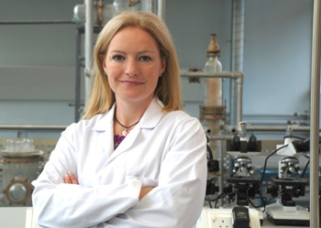Dr. Laura Waters uses Glantreo materials for study
Name: Dr Laura Waters
Organisation: University of Huddersfield
Research Area of Interest: Pharmaceutical Formulation and Analysis
Glantreo Products Used: Mesoporous silica SBA-15 [PSBA1510060R-50], SOLAD™ [PNPP0.5NAR-10] & Eiroshell™ 2.6um, [PSPP2.6100R-10]
Contact Details: email: waters@hud.ac.uk Telephone:+44 1484 472190
Keywords: Pharmaceutical formulation Microwave Analysis
Hashtags: #Bioavailability #SustainedDrugRelease
Related Citations: LJ Waters et al EJPB:2013:85:3:Bpp936-41
Background Study Details
Many drugs exhibit poor water solubility, leading to limitations in potential formulation options and in some cases, resulting in drug candidates being rejected during the development process. Limited solubility results in low levels of bioavailability, often overcome using a variety of methods including alterations to the physical properties of the drug.
In the last ten years mesoporous silica based drug delivery systems have been investigated to enhance solubility and thus, improve bioavailability, offering the ability to maintain therapeutic levels of a drug over a specified period of time through the controlled design of ordered pore networks, high pore volumes, high surface areas and functionalised surfaces. Furthermore, silica based formulations offer a biocompatible and stable product that has become regarded a suitable method for the sustained release of drugs to specific organs within the body.
Our research group investigated the application of a unique formulation method with a model drug (Fenofibrate)known to exhibit poor water solubility to create a novel and superior formulated product. Previous research had confirmed the suitability of formulating this particularly problematic drug with a limited range of ordered mesoporous silicas although our studies used different silicas supplied by Glantreo and different drug loading methods. As presented in our research paper, we found a significant enhancement in the release profile of the model drug for all formulations prepared using microwave heating and the silica based formulations.
We concluded that this finding could be applied to a far wider range of compounds that exhibit poor aqueous solubility, and therefore limited drug release, thus helping improve bioavailability through the use of bespoke mesoporous silicas.
Since this study we have continued to develop formulations with silica products from Glantreo and have determined that drug release can be carefully tailored, based on the choice of silica and desired release profile. Furthermore, the potential applications of using silica based formulations are vast, for example with data to show relevance for veterinary pharmaceutical products, as well as human medicine.
What problem did the Glantreo product solve?
Significantly enhanced the release profile for a model pharmaceutical compound with poor aqueous solubility. This could help improve the bioavailability of a compound in vivo.
What was the outcome, did we solve the problem?
Yes. Allowing tailored drug release profiles based on silica choice.
What is the next step?
Determine the suitability of the published formulation (materials & methods) for a wider range of compounds.
Are there other issues Glantreo could help with?
Continue to provide novel silica based products to further optimise formulations?

